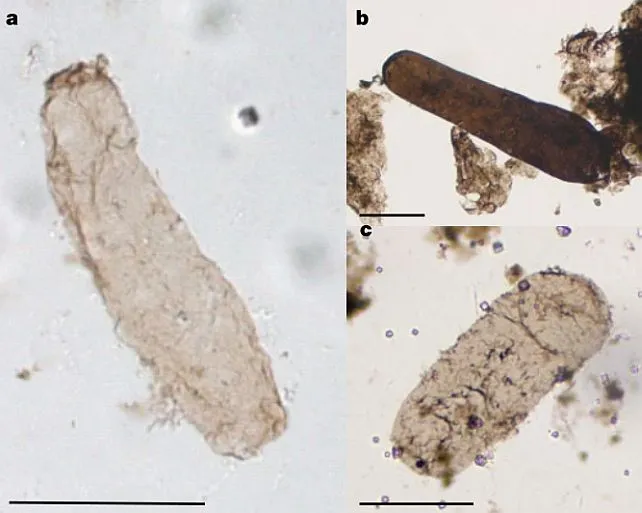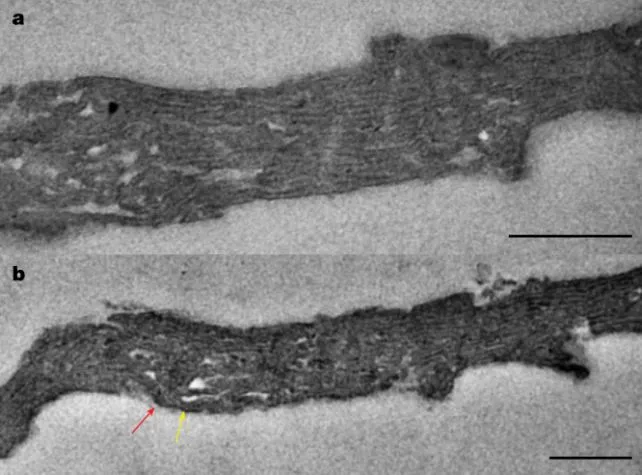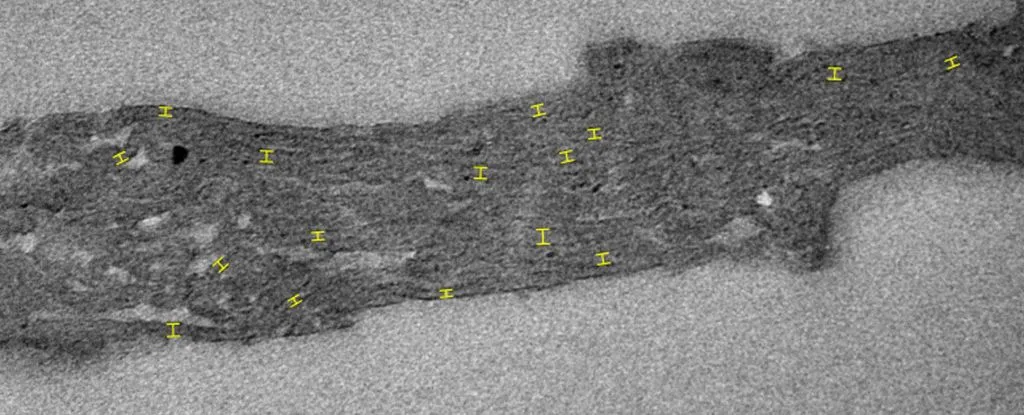Opening details
Thylakoids can be found in the cells of modern photosynthetic organisms containing the pigment chlorophyll. This is used for light absorption and further photosynthesis. This means that microfossils are the oldest direct evidence of photosynthesis, showing that cyanobacteria at that distant time contained thylakoids. Additionally, this discovery provides a better understanding of Earth’s early ecosystems and how life emerged and evolved on our planet.
Our study provides direct evidence for the existence of metabolically active cyanobacteria performing oxygenic photosynthesis.
– writes the team led by paleomicrobiologist Catherine Demoulin from the University of Liège.
![]()

Image of microscopic specimens of Navifusa majensis / Photo: Catherine Demoulin / Nature
Detailed analysis of other fossils can reveal more similar structures by pinpointing the moment when photosynthetic structures were absorbed and activated by early forms of complex algal cells.
Photosynthesis, which uses sunlight to convert water and carbon dioxide into glucose and oxygen, underlies the survival of nearly all living things. Photosynthetic organisms not only form the basis of most food chains, but through their metabolic processes they fill the atmosphere with the oxygen that most of us need to breathe to survive.
A little history
Scientists have long known that at the beginning of Earth’s history there was very little free oxygen in the atmosphere and oceans. However, various geochemical data indicate that oxygen levels rose suddenly around 2.4 billion years ago, during what is called the Great Oxidation or the Great Oxidation Process. It is not known what caused this, but one of the versions is the emergence of photosynthetic organisms.
The oldest undisputed microfossil evidence of cyanobacteria is an organism called Eoentophysalis belcherensis, dating back 2.018 billion years. However, fossils are often difficult to interpret because their internal structures are not always preserved intact. Additionally, not all cyanobacterial species have thylakoids.
Details of the study
Catherine Demoulin and colleagues used different high-resolution microscopy techniques to examine the external and internal structures of microfossils of a species known as Navifusa majensis, believed to be a type of cyanobacteria.
They discovered thylakoid membranes in the bodies of single-celled organisms from two fossils.
- One example comes from the Grassy Bay Formation in Canada and dates to 1.01 billion years ago.
- The second is from the McDermott Formation, which dates back to 1.75 billion years ago.
![]()

Transmission electron microscopy images of Navifusa majensis specimens from the McDermott Formation / Photo: Catherine Demoulin / Nature
![]()

Transmission electron microscope image of a Navifusa majensis specimen showing the thylakoid measurement site / Photo: Catherine Demoulin / Nature
These findings push the age of the thylakoid fossils back to around 1.2 billion years and mean that oxygenic photosynthesis likely evolved before that time. But we still don’t know if it had time to contribute to the Great Oxidation Event.
















